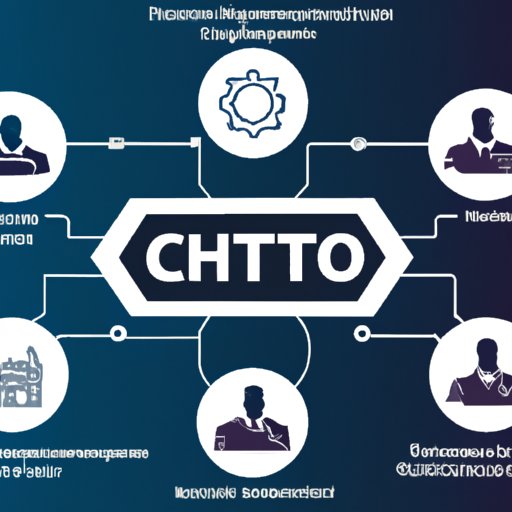Introduction
The Chief Technology Officer (CTO) is a senior executive responsible for overseeing the development and implementation of an organization’s technology strategy. The CTO is often seen as a key member of the senior management team and works closely with other executives to ensure that the organization’s technology goals are met. In recent years, the role of the CTO has become increasingly important as organizations rely more heavily on technology to remain competitive.

Exploring the Role of a Chief Technology Officer
The primary duties of a CTO include developing and implementing technology solutions, managing teams and resources, providing technical guidance and leadership, and ensuring compliance with industry regulations. A CTO’s main objective is to ensure that the organization’s technology infrastructure is reliable, secure, and able to meet the organization’s current and future needs. To achieve this, the CTO must be knowledgeable in a variety of areas, such as IT security, software engineering, networking, data storage, and cloud computing.
In addition to their technical expertise, CTOs must also have strong organizational skills and the ability to lead and motivate teams. They must be able to communicate effectively with stakeholders at all levels and have the ability to develop and implement strategies that will help an organization achieve its objectives. According to a study by Harvard Business Review, “CTOs need to be able to think strategically and act tactically, understand customer needs and business objectives, and translate those into technology solutions.”
The Responsibilities of a CTO: What You Need to Know
As a CTO, you will be responsible for developing and implementing technology solutions that will meet the organization’s needs. This includes selecting, deploying, and maintaining hardware and software systems, as well as designing and implementing networks and storage solutions. You will also be responsible for managing teams of engineers and other IT professionals and ensuring that they have the resources and support they need to do their jobs effectively. Additionally, you will be responsible for providing technical guidance and leadership to the organization and ensuring that all processes and procedures comply with industry regulations and best practices.

The Benefits and Challenges of Being a CTO
Being a CTO can be both rewarding and challenging. On the plus side, you will have the opportunity to shape the organization’s technology strategy and make a meaningful contribution to its success. Additionally, you will be able to use your technical expertise to solve complex problems and develop innovative solutions. On the downside, the job can be demanding and require long hours and a great deal of responsibility. Additionally, you may face resistance from other members of management who may not fully appreciate the importance of technology or the CTO’s role in the organization.
A Comprehensive Guide to Becoming a Chief Technology Officer
Becoming a CTO requires a combination of education, experience, and certifications. Most CTOs have at least a bachelor’s degree in computer science or a related field, though many have advanced degrees. Additionally, most CTOs have several years of experience in the IT field, either as a software engineer, network administrator, or systems analyst. Finally, it’s important to stay abreast of emerging technologies and trends in the industry and obtain certifications in relevant areas such as cybersecurity, cloud computing, and software development.

How to Succeed as a Chief Technology Officer
Success as a CTO requires a combination of technical expertise and soft skills. It’s important to establish and maintain strong relationships with other members of the organization, especially those in the executive suite. Additionally, it’s important to use data-driven decision making and stay abreast of emerging technologies and trends in the industry. Finally, it’s essential to be able to communicate effectively and provide clear direction and guidance to the team.
What it Takes to Be an Effective CTO?
To be an effective CTO, you must possess a number of qualities. These include strong communication skills, the ability to adapt to changing circumstances, and strategic thinking. Additionally, you must be able to work well with others and foster a collaborative environment. Finally, it’s important to be able to think outside the box and identify creative solutions to difficult problems.
Conclusion
As a CTO, you will be responsible for overseeing the development and implementation of an organization’s technology strategy. To be successful in this role, you must possess a combination of technical expertise and soft skills. Education, experience, and certifications are important components of becoming a CTO, and it’s essential to stay abreast of emerging technologies and trends in the industry. With the right combination of skills and knowledge, you can be an effective CTO and make a meaningful contribution to the organization’s success.
(Note: Is this article not meeting your expectations? Do you have knowledge or insights to share? Unlock new opportunities and expand your reach by joining our authors team. Click Registration to join us and share your expertise with our readers.)
